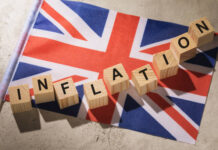Markets
Japanese inflation numbers for January this morning kicked off a moderately interesting eco calendar for today. A higher-than-expected outcome combined with base effects ready to push up the February reading rekindled expectations for the BoJ to ditch its negative policy rate and/or YCC programme as soon as March but more likely April. Japan’s 2-y yield (0.17%) closed at the highest level since 2013. The yen outperforms global peers. USD/JPY remains north of the symbolically important 150 though. Next up were a slew of US data. Durable goods orders (-6.1%) undershot an already weak consensus of -5% m/m but a slump in Boeing orders explained the sharp drop (non-defense aircrafts tanked almost 60% m/m). Core gauges were much less volatile. Shipments of capital goods excluding defense and aircrafts is the most important one as it is used to help calculate investments in the GDP reports. The series climbed a very solid 0.8%, far above the 0.1% expected and the most since January 2023. Housing price data a bit later came in too close to expectations to leave a stamp on markets but rising 0.21% m/m does bring the y/y reading to the highest since November 2022 (6.13%). After wrapping up this report, US consumer confidence (Conference Board) and several regional business sentiment indicators are still up for release too. But for now, US yields at the front recovered some of the previous losses following the data while the long end even ekes out a few bps. Changes vary between -2.1 bps and +2.9 bps. German yields struggled for direction, resulting in marginal changes across the curve with front end outperformance (-1.4 bps). Tomorrow’s national CPI readings could potentially unlock the stalemate. Currency markets – with the aforementioned exception of JPY – trade similarly clueless. EUR/USD whipsawed within an extremely tight 1.084/1.087 trading range. EUR/GBP called of a strengthening attempt to trade unchanged around 0.855 at the time of writing. In Central-European spheres we note HUF underperformance after the central bank went ahead with a 100 bps rate cut following more rapid disinflation (see below).
News & Views
The National Bank of Hungary (MNB) today stepped up the pace of policy easing, cutting the policy rate a full percentage point from 10% to 9%. At the previous 3 meetings, the MNB adjusted policy with steps of 75 bps. However, after a faster than expected decline in January inflation (0.7% M/M and 3.8% Y/Y from 5.5%), the MNB again had the opportunity to balance the acceleration in the disinflation process against risks of financial stability, including the risk of an unwarranted further decline of the forint. In its policy statement today, the MNB evaluates that the disinflation process in the Hungarian economy was strong and general with market services and non-durable industrial goods making the largest contribution to the to the decline in inflation. Core inflation eased to 6.1%. In the coming months, inflation is expected to stay close to the upper bound of the 3% +/- 1.0% tolerance band, before rising temporarily in the middle of the year due to base effects. The MNB still expects inflation to return to target on a sustained basis in 2025. A lower than expected inflation, further improvement in the current account balance and an improved risk perception on the country allowed to lower the base rate at a temporarily faster pace. Vice governor Virag indicates that he still sees the policy rate in the 6-7 range by the June. The forint weakened beyond EUR/HUF 390, but the damage remains limited for now (EUR/HUF 390.5).
German consumer confidence as measured by the index jointly published by Gfk and the Nuremburg Institute for market decisions rose marginally in March (29 from 29.6) but remains at a very low level. The NIM consumer expert indicated that “There is great uncertainty among consumers. In addition to the constantly rising prices, the weaker economic forecasts for the German economy this year are likely to be another important reason for this”. Consumer willingness to buy eased from -14.8 from 15.0. Income expectations improved from -20.0 from -4.8. Business cycle expectations held at a low -6.4 from -6.6. On the other hand, willingness to save rose further from 14.0 to 17.4. The German government last week downwardly revised its 2024 growth forecast to 0.2% down from 1.3% expected in the previous estimate from October.














